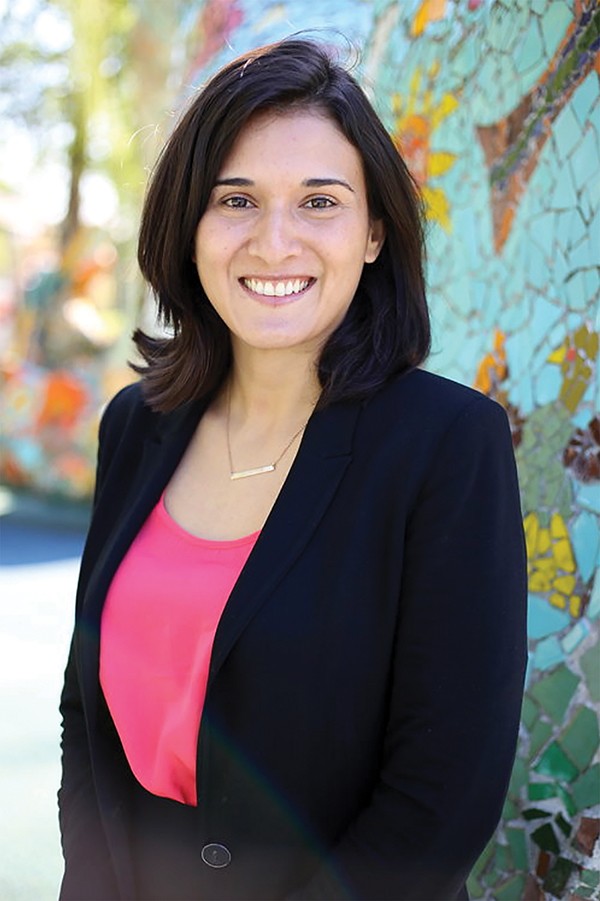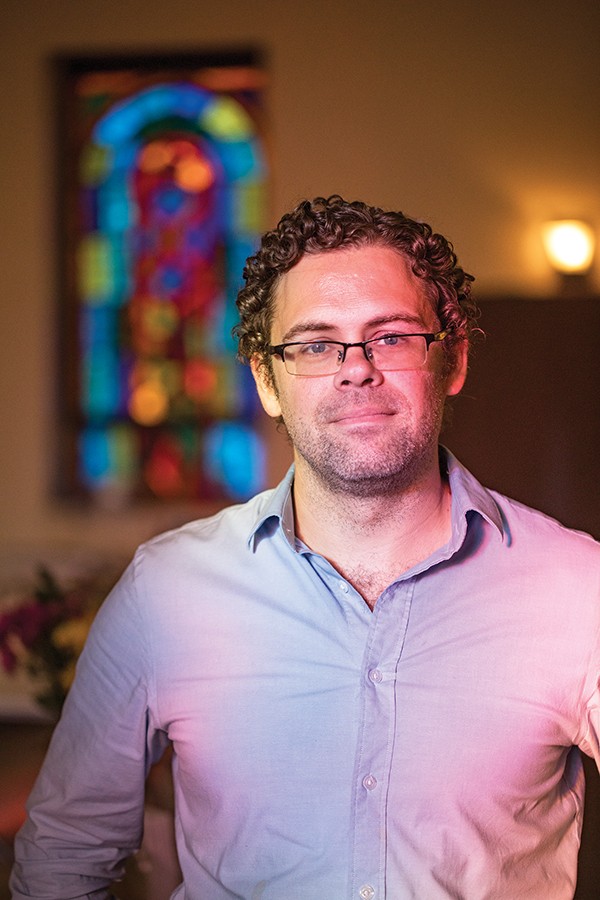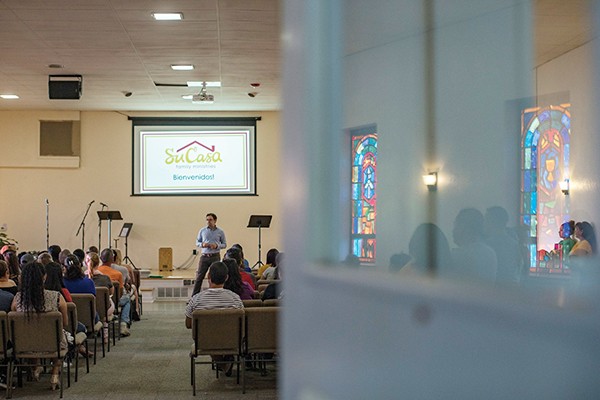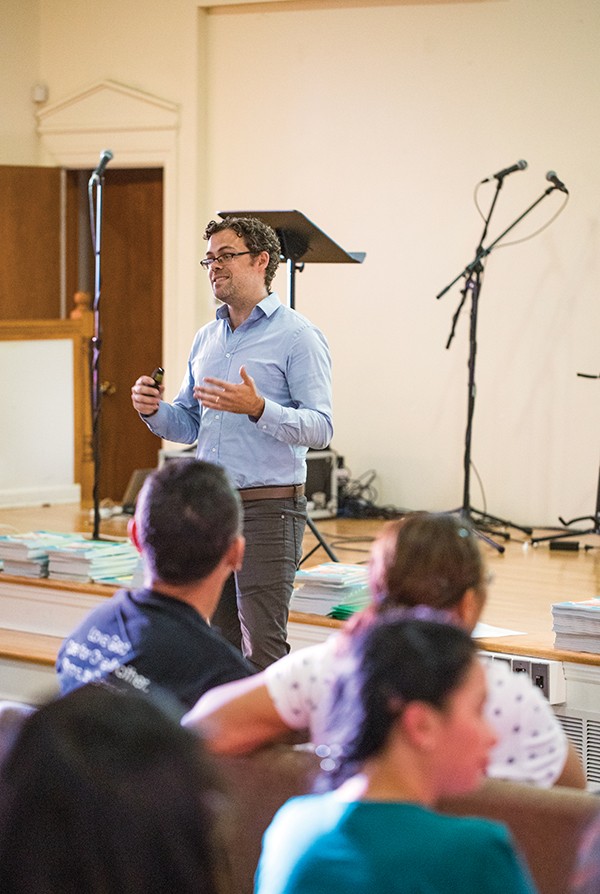Oscar spent his ninth birthday alone in a Florida detention center for immigrant minors, eating tortillas and ham. He’s been detained at the Homestead, Florida, shelter and separated from his dad, Kevin, since mid-May. His father is being kept at the Port Isabel Detention Center in Texas.
The pair left Honduras in early May, hoping eventually to join their relatives in Memphis — Elizabeth and Eber (a couple who wish to keep their family’s last name out of this story).
Elizabeth is Oscar’s aunt. She says Kevin’s and Oscar’s lives were in danger in Honduras. Kevin had been receiving death threats on his job as a taxi driver, and his son was starting to be recruited by gangs at school, a common occurrence in Honduras.
 Courtesty of U.S. Customs and Border Protection
Courtesty of U.S. Customs and Border Protection
U.S. border patrol
“So they left to have a better life,” Elizabeth says, adding that when Kevin and his son left their home country, they planned to seek asylum at the border. “They weren’t trying to come here illegally,” she says. “They planned to turn themselves in.”
According to Elizabeth and Eber’s attorney, Tatine Darker, this is a legal approach to seeking asylum.
“They cross the border and turn themselves in to immigration authority and say, ‘We want to apply for asylum.’ It’s too dangerous now to cross in the areas where you don’t get caught, especially with kids.”
Kevin and Oscar knew they would get caught, but they thought they would be released from detention after a couple of weeks, and then be allowed to present their asylum case in court, Elizabeth says.
Unfortunately, Oscar and his dad entered the country as the Trump administration was beginning to enforce its “zero-tolerance” policy, which required the prosecution of all individuals who illegally entered the United States. The policy had the effect of separating parents from their children, because parents were referred for prosecution and their children were placed in the custody of a sponsor — such as a relative or foster home — or held in a shelter.
Several thousand children were taken from their parents under this policy. Oscar was one of them. Elizabeth says Kevin and Oscar were immediately separated when they were apprehended by border patrol officers. “They didn’t get to say goodbye or anything.”
Elizabeth says they didn’t hear from either of her relatives for weeks, until they got a call from Oscar and a social worker. They were relieved, but the relief was fleeting. They thought Oscar would only be detained for 15 days, but days have turned into weeks and weeks have turned into months. And nine-year-old Oscar remains alone in a Florida detention center.
Darker says under a 1997 federal agreement, minors aren’t supposed to be detained for more than 20 days and that, in this case, they’ve “well-exceeded that.”
Elizabeth says their anxiety is compounded when they sometimes go weeks without hearing from Oscar, although, he’s allowed two phone calls per week. When he does call, he’s crying, Elizabeth says. “He doesn’t want to stay locked up there.” They’ve been told Oscar might be kept in detention until he can be reunited with his dad, who could have a court date coming up this month. But for now, Kevin and his son’s fates remain uncertain.
There is No Line
Many of the 12.1 million undocumented immigrants that the Department of Homeland Security (DHS) estimates lived in the U.S. as of 2014 have no legal basis for citizenship, says Jan Lentz, an attorney at Darker & Associates.
“There’s absolutely nothing they can do to fix their papers,” she says. “It’s not just that people are lazy or that they don’t want to. That’s a misconception. I’ve not met a single person who’s here and undocumented that wants to stay undocumented. But you can’t just jump from being undocumented to becoming a citizen. It’s a long process.”
Before applying for citizenship, generally one has to have been a Legal Permanent Resident or Green Card holder for at least five years. But, to be eligible for a Green Card, applicants have to meet specific criteria.
Legal immigration to the United States is largely limited to three categories: family, employment, and humanitarian protection, according to the American Immigration Council (AIC).
U.S. citizens and legal residents can petition to bring non-citizen family members, including spouses, children, siblings, and parents into the country. The U.S. Department of State awards a maximum of around 226,000 family-sponsored visas each year, according to United States Citizenship and Immigration Services.
The number of employment-based visas granted are limited to 140,000 each year. In order to be eligible for permanent employment visas, immigrants must have certain skills and meet educational requirements. Additionally, in most cases, applicants must have a job lined up here with a sponsoring employer. Most of the qualifying professions for permanent immigration require high levels of education, and applicants are prioritized based on their skills and work experience. Professions such as scientists, professors, and multinational executives are the top preference, the AIC reports.
Finally, U.S. law provides refugee or asylee status can be granted to people able to prove there is a “well-founded fear of persecution based on race, religion, membership in a particular social group, political opinion, or national origin.” Multiple screenings and court appearances are usually required in order to be granted asylum and admitted as a refugee.
The grounds for receiving asylee and refugee status are the same, but the procedures for each differ. A refugee applicant applies from outside the U.S. Those seeking asylum are already in the country — or like Oscar and Kevin, have just arrived at a U.S. port of entry. To be granted asylum under this process, applicants must prove in court that they meet the definition of a refugee.
Oscar and his dad are just two of thousands of immigrants who seek asylum in the U.S. each year. The most recent data from the DHS Office of Immigration Statistics shows that in 2016, 20,455 individuals were granted asylum. Congress, in conjunction with the president, sets the number of refugee admissions allowed each year. In 2018, President Donald Trump’s administration set the number at 45,000 — the lowest it’s been since the program began in 1980.
Martha Lopez, a local immigration specialist working through the international agency World Relief, says all of the processes to immigrate here legally take “a long time and a lot of documentation” and require having an income level above the poverty line, in some cases.
“Options are limited,” she says. “It’s almost impossible for people who are trying to get legal status and do things the right way from the very beginning,” Lopez says. “It could take four, five, sometimes 15 years to go through the process. It’s not as easy as it seems.”
One of the reasons the process is so lengthy is because of the limited number of visas the country gives each year, creating backlogs of applicants, who collectively wait decades, she says.
For example, the AIC notes that, as of May 2016, unmarried children of U.S. citizens must wait more than five years, and siblings of U.S. citizens wait more than 10 years to enter the country legally.

Lisa Sherman-Nikolaus
Lisa Sherman-Nikolaus, policy director for the Tennessee Immigrant and Refugee Rights Coalition (TIRRC), says the country’s current immigration system is broken and outdated. There hasn’t been immigration reform in decades, she says.
“For the vast majority of people currently living here without immigration status, there is no pathway to citizenship,” Sherman-Nikolaus says. “That will take an act of Congress. What’s more, the Trump administration is eroding the limited protections that do exist for some immigrant groups, making whole communities vulnerable to deportations by revoking their legal status.”
Sherman-Nikolaus says the current system doesn’t meet the demand of the country’s employers or the number of people who want to immigrate here for family reunification or better opportunities.
“Often you hear people say ‘Well, why don’t they just get in line?'” Sherman-Nikolaus says. “But there is no line. The reality is there is no pathway for them to enter the country legally or for those who are already here to adjust their status.”
 Justin Fox Burks
Justin Fox Burks
Ministries
In the Community
Once in the U.S., the life of an immigrant can be very challenging, says Michael Phillips, director of the nonprofit, Su Casa Family Ministries. “It’s not easy to be an immigrant no matter what,” Phillips says. “Just learning a new system can be hard.”
That’s where Su Casa comes in, Phillips says. Formed in 2008, the organization strives to create a place where the immigrant community feels safe and is able to connect with others.
“Oftentimes, immigrants come from more familial and communal cultures,” Phillips says. “When they come to the States, not only have they literally left their family behind, but they feel lonely and disconnected. There is no sense of connectivity for them.”
 Justin Fox Burks
Justin Fox Burks
 Justin Fox Burks
Justin Fox Burks
 Justin Fox Burks
Justin Fox Burks
Su Casa offers two primary programs: early childhood care and adult English classes, which Phillips says are in high demand. A new semester of English classes kicked off last week, with 220 students enrolled and an additional 125 students on the wait-list. Phillips says it’s the largest wait-list ever.
Su Casa students come from 17 countries, including Venezuela, El Salvador, and Mexico. Some are documented. Some are not.
Phillips says the Spanish-speaking community now lives under “constant threat,” due to lack of clarity around their legal status. There is uncertainty as to how to proceed, depending on each immigrant’s situation, he says. “Whatever their situation is, you add in questions about legal status and ‘what’s going to happen if?’ It makes it more difficult for people to go to work, school, and have healthy and vibrant neighborhoods and communities,” Phillips says. “Everything is more complicated when you have a whole group of people concerned about how they’re going to be treated.”
People are scared to go to the police, Phillips says, recalling an incident involving an immigrant woman who was a victim of domestic abuse, but for fear of her partner getting deported, she didn’t report him to the police.
“That’s a worry that hangs over their heads,” Phillips says. “People are scared; people don’t call the police when crimes are happening, because they’re worried about the legal-status question. I’d like for it to be a less tumultuous environment for people to live in.”
Rondell Treviño the founder of the Immigration Project (a faith-based organization that works to help the immigrant community flourish) lives north of Summer in the Berclair area, which is probably the most immigrant-populated part of the city, he says.
Most of his neighbors are “always living on their toes and walking on eggshells,” he says. So much so that there is a text thread set up among his neighbors to alert each other when ICE is in the neighborhood.
“The reality is no one is sure of what will happen the next day,” Treviño says. “There were times, I’d hear that ICE officers are slowly driving around the neighborhood in the morning waiting for families to leave for work and school. There have been days when families have asked me for rides to church because they were scared to leave alone.”
“It’s wrong,” Treviño says. Most of the undocumented immigrants he knows have lived in the country for over a decade and “have done nothing wrong in the sense of making our neighborhoods feel unsafe,” he says. “The fact is the majority of immigrants are good people.
“I think it’s unfair that they look to detain undocumented immigrants who are good neighbors,” Treviño says. “They’re subjecting all immigrants to criminal treatment. They’re willing to detain anyone.” And once someone is detained, Treviño says, there is a chance that they might never see their family again.
When immigrants are picked up by ICE here, they’re detained “wherever there’s room,” sometimes here, but oftentimes in a facility in Jena, Louisiana, Treviño says. There, they await a court date, but oftentimes they don’t have money for an attorney, he adds.
“It’s almost automatic that, once you go through that process, that you’ll more than likely be deported,” Treviño says. “And then the rest of the family is left here by themselves. That’s a summary of what you usually see.”
Though Treviño says reports of ICE raids have been less frequent in his neighborhood, recently, “the fear is still lingering, because at any given moment, ICE can ramp up again, targeting those who can’t get right with the law because the law doesn’t allow it. It’s not a new phenomenon. These injustices aren’t new.”
Tennessee’s New “Mass Deportation” Law
Treviño, Phillips, and other leaders in the community anticipate the conditions for immigrants worsening in January, when a new bill, Tennessee HB2315, which requires law enforcement to cooperate with ICE, is set to go into effect.
The measure has been deemed a “mass-deportation” bill by many in the immigrant community. It would prohibit state and local governments from adopting sanctuary policies for undocumented immigrants, and authorize local law enforcement agencies to enforce federal immigration laws.
“There’s this whole question of police cooperation,” Phillips says. “I’d like to know what their level of cooperation will be as it relates to what the state law says and what it doesn’t say. It’s going to come down to how willing leadership of law enforcement agencies are [to cooperate].”
Sherman-Nikolaus of the TIRRC says the legislation will only serve to further drive a wedge between local government and immigrant communities.
“By passing HB2315, the state government has given ICE the green light to commandeer our local government agencies to do the work of the federal government. When local government officials make it easier to deport residents, immigrant cooperation and trust is lost.”
Sherman-Nikolaus says the TIRRC will be working to minimize the impact of HB2315 and will monitor its implementation when it goes into effect in January.
Dreaming On
When U.S. Attorney General Jeff Sessions announced last year that the Deferred Action for Childhood Arrivals (DACA) program would be phased out, the future of around 800,000 undocumented young immigrants went into limbo. More than 8,000 of those DACA recipients reside in Tennessee, and 1,910 live in Memphis. Under DACA, recipients receive a work permit, a social security number, and protection from deportation.
“Over the last 6 years, DACA has been a lifeline, giving young immigrants who’ve grown up here protection from deportation and the opportunity to work,” Sherman-Nikolaus says.
DACA recipients continue to receive protection because of rulings in three different court cases that forced the Trump administration to reinstate DACA renewals. But Sherman-Nikolaus says, “any day now, we’re expecting the notorious court of Judge [Andrew] Hanen to issue a ruling that could bring an end to DACA renewals and put immigrant youth at risk.”
In May, Texas and several other states filed a lawsuit against the federal government in a U.S. District Court, challenging the creation of the DACA program. Sherman-Nikolaus says this is the same court that blocked the expansion of a similar program in 2015.
“Immigrant youth deserve a permanent solution and the opportunity to get on a pathway to citizenship,” Sherman-Nikolaus says. “That’s why we need a clean Dream Act — legislation that will grant young immigrants protection without putting their families or other communities at risk of deportation. This should be the first order of business for those we elect to Congress in November.”
It will likely be up to the U.S. Supreme Court to decide the future of DACA.
Meanwhile, the immigrant community lives in fear and doubt — and a nine-year-old boy awaits his fate in a Florida detention center. Editor’s note: Attorney Tatine Darker is married to Flyer editor, Bruce VanWyngarden.